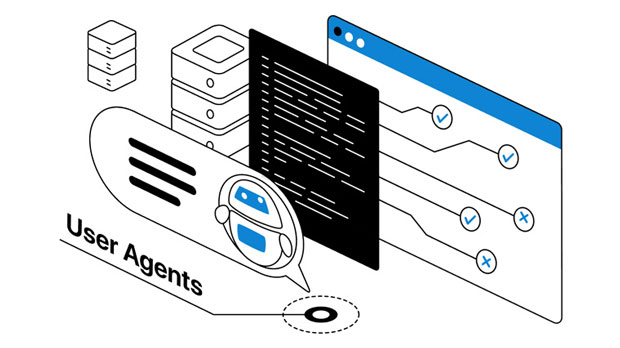When it comes to accessing YouTube through proxies, two prominent players are CroxyProxy and PYPROXY. Both offer a range of features aimed at enhancing users' online experiences. However, the real question for most users revolves around their pricing and cost-effectiveness. Understanding the pricing structures and evaluating the value each service provides can help users make informed decisions. This article will provide a detailed comparison between CroxyProxy and PyProxy, analyzing both services' pricing, features, and overall cost-effectiveness for YouTube use. We will also explore their key differences, helping you determine which one offers the best value for your needs. Pricing Overview of CroxyProxy and PyProxyWhen assessing the cost-effectiveness of any proxy service, the pricing model plays a critical role. Both CroxyProxy and PyProxy offer free and paid versions of their services, but the features and quality of the proxy connections differ significantly between these options. - CroxyProxy Pricing: CroxyProxy typically operates on a tiered pricing model. The free version provides basic functionality, allowing users to access YouTube with limited features and potential speed throttling. For more advanced features, such as faster servers, higher security levels, and access to more locations, users need to opt for the premium plan. This premium plan comes at a monthly subscription fee, which can vary depending on the package selected.- PyProxy Pricing: Similarly, PyProxy offers a free version that provides limited access to YouTube, with restrictions on speed and server locations. Their paid options are structured based on the level of access and support required. PyProxy's premium offerings include faster servers and additional features like encrypted connections and the ability to bypass geographic restrictions. The pricing for PyProxy's premium plans is competitive, but generally higher than that of CroxyProxy's, depending on the package and the length of the subscription.Comparing Features and ValueOnce the basic pricing is understood, the next step in the analysis is to look at the features each service provides and evaluate the value these features bring to the user.- CroxyProxy Features: The primary advantage of CroxyProxy lies in its simplicity and ease of use. The platform is designed for users who need a straightforward proxy solution for YouTube access, without any complex configurations. While the free version may be sufficient for occasional users, those who need more speed and reliability will benefit from the premium versions. CroxyProxy also provides automatic switching between proxy servers, ensuring minimal downtime. Another appealing feature is its support for multiple devices, including mobile phones, tablets, and computers.- PyProxy Features: PyProxy, on the other hand, offers more robust features, particularly for users who require secure and stable connections. Its premium version is known for offering high encryption standards, which make it a strong choice for privacy-conscious users. Additionally, PyProxy provides a user-friendly interface and supports streaming in higher resolutions without buffering. However, users on the free plan may experience slower speeds, especially during peak usage hours. PyProxy also has a wider selection of server locations compared to CroxyProxy, which can be a significant advantage for users who need to bypass geographic restrictions.Speed and PerformanceThe speed and overall performance of the proxy service are critical factors to consider, especially when using YouTube, where high-speed streaming is a necessity.- CroxyProxy Speed: CroxyProxy offers fast servers on its premium plans, but free users may experience slower speeds due to limitations on bandwidth. Users have reported that the service is reliable for streaming YouTube content in standard definition (SD), but for high-definition (HD) or ultra-high-definition (UHD) streaming, the experience can be inconsistent unless they subscribe to the premium plan.- PyProxy Speed: PyProxy tends to perform better on the free plan compared to CroxyProxy, particularly for streaming content. Users have noted that PyProxy supports HD streaming without significant buffering on the free plan, though there may still be some limitations. The premium version of PyProxy provides even better speeds, making it a preferred choice for users who regularly stream YouTube videos in HD or higher resolutions.Security and Privacy ConsiderationsSecurity and privacy are significant concerns for users of proxy services, particularly when accessing content like YouTube, which often requires users to log in with personal accounts.- CroxyProxy Security: CroxyProxy provides a basic level of security for free users, including data encryption and limited protection against cyber threats. However, for those who prioritize privacy, CroxyProxy’s premium plans offer more advanced security features, such as better encryption and secure tunneling protocols. This makes it a solid choice for users who need a balance of speed and security.- PyProxy Security: PyProxy, on the other hand, shines in the area of security. Even on the free version, PyProxy uses encrypted connections to safeguard users’ data. The premium plans offer additional features, such as more robust security protocols and IP masking, which makes it an excellent choice for users who require a higher level of privacy and protection. This added security comes at a cost, as the pricing for PyProxy’s premium plans is higher than CroxyProxy's.Customer Support and User ExperienceCustomer support is often a decisive factor when selecting a service, especially when issues arise during use. A responsive support team can greatly enhance the overall user experience.- CroxyProxy Customer Support: CroxyProxy’s customer support is available to premium users, with priority response times for those on paid plans. The support is generally responsive, though users on the free plan may face longer wait times for assistance. The service offers a comprehensive FAQ and community support for troubleshooting common issues, making it relatively easy for users to resolve minor problems on their own.- PyProxy Customer Support: PyProxy is known for its exceptional customer support, especially for premium users. It offers 24/7 support for those with paid plans, ensuring that any technical issues are promptly addressed. The free version, however, does not come with the same level of support, which can be frustrating for users encountering problems. Overall, PyProxy's support team is highly regarded for its professionalism and quick response times.Conclusion: Which Proxy Service Offers Better Value for YouTube Access?In terms of pricing and cost-effectiveness, both CroxyProxy and PyProxy have their strengths. CroxyProxy offers a more affordable option for basic users and those who need a simple, no-frills proxy service for YouTube. It is ideal for those who don’t require advanced features but still want reliable performance. On the other hand, PyProxy offers superior security, higher performance for HD streaming, and better customer support, making it a great choice for privacy-conscious users and those who need faster speeds or additional features. Ultimately, the choice between CroxyProxy and PyProxy will depend on your specific needs. If budget is a primary concern and you don't mind a few limitations, CroxyProxy is a solid option. However, if you value security, speed, and excellent customer support, PyProxy may be the better investment despite the higher cost.
Sep 28, 2025



































































